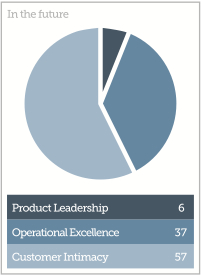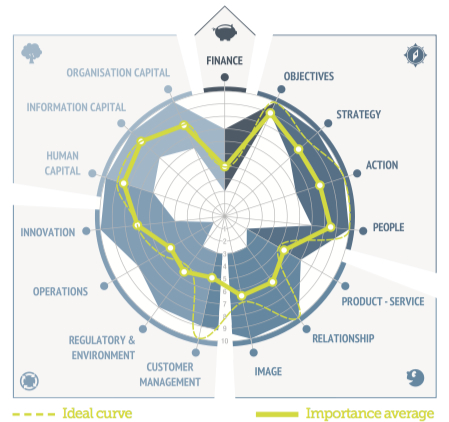Ready for 2012? – part 3
This is the 3rd in a series of blog posts under the main headline “Ready for 2012?”
The objective of the blog posts is to outline a 2012 “preparation process” where you end up having a plan and a budget, which is a stepping stone to a position as a the global market leader in the future and where the stakeholders are 100% aligned and committed to execute the plan and deliver the numbers for 2012.
The first post was about alignment and identification. The need for having all stakeholders behind the plan.
The second post introduced the concept of organizational health and the need to get the important stakeholders involved in the process.
In blog post #2 we also promised to explain how you can perform an alignment & identification check with your 2012 planning team.
Why check alignment and identification?
Have you ever been involved in or maybe even responsible for driving a planning and budgeting process? How much time did you spend on defining and managing the process? How much time did you spend on semantic discussions around fundamental issues such as strategy, vision, mission, customer value proposition, Go-To-Market strategy and who’s-responsible-for-what? How often did you have to cut through the red tape and dictate a final budget? Did you deliver on the plan and the budget?
Ever heard about sandbagging? This is the common approach used by any savvy business unit manager and senior sales executive with a background from a big enterprise. Sandbagging is the “noble art” of fighting like crazy to get the revenue objectives minimized while maintaining or increase the cost base. This is the fine art of sub-optimizing. Sandbagging is pursuing personal objectives which are not aligned with company objectives. Sandbagging is what happens when you are not aligned.
Are you the CEO of an ambitious company and do you want to be the global market leader within the next 5-10 years? Then you must bring all your key stakeholders on the same page BEFORE you start the plan/budget 2012 exercise.
You cannot second guess if they are on the same page; you must verify that they are: We recommend using the ValuePerform method for this verification.
ValuePerform
ValuePerform is a tool designed to do alignment & identification check in an organization. It doesn’t require any specific prerequisites. It can be accomplished within a week and does not require the participants to be present at the same place at the same time for more than 1 day.
Through the ranking of 36 statements ValuePerform will map your current and your future customer Value Proposition. ValuePerform uses the generic 3 value creating types:
- Product Leadership
- Operational Excellence
- Customer Intimacy
Whether you already have a well defined Customer Value Proposition or not, ValuePerform will identify the DNA of you business.
Based on 6 questions ValuePerform will identify you main sources of future financial performance. Using 4 questions it will determine your competitive situation.
The Questionnaire
A questionnaire is now generated for your specific situation and submitted to all the stakeholders. Through 70 question and ratings ValuePerform is capturing the stakeholders’ scoring of importance and performance on 15 management areas divided into 5 perspectives:
The Financial perspective
- Financial performance
The Management Perspective
- Setting objectives
- Defining strategy
- Taking action
- Management skills and competencies
The Customer Perspective
- The Product/service (Customer Value Proposition)
- The customer relationship
- The image
The Internal Processes Perspective
- Operations
- Regulatory & Environment
- Customer Management
- Innovation
The Learning/growth Perspective
- Organisation Capital
- Information Capital
- Human Capital
Mapping the alignment
ValuePerform now produces a set of maps illustrating the degree of alignment in your planning team. ValuePerform also shows how well your current prioritization and performance corresponds to your Value Proposition, your competitive environment and how you expect to generate the financial performance.
If you haven’t performed an alignment check within the last 6 months we can guarantee that in 98% of all cases the normalized degree of misalignment will be larger than 50%. This means that there are more areas where the team disagree than agree. There will also be more than a 50% difference in what the team find important and how they rate actual performance.
On the same page
Doing a ValuePerform alignment & identification check before embarking to the 2012 planning process will bring the planning team on the same page. It will enable management to ensure alignment and make potential adjustments to the team and the strategy. Further ValuePerform facilitates the definition of the most important strategic enablers which must be covered in the 2012 plan.
A ValuePerform alignment & identification check can be completed within one calendar week.
Need a ValuePerform “Sherpa”?
Do you believe ValuePerform could be something for your organization? If so, drop me a mail and I will recommend a ValuePerform #sherpa” that can help you through the process.
The next “Ready for 2012?” post is about “The Revenue Challenge”












